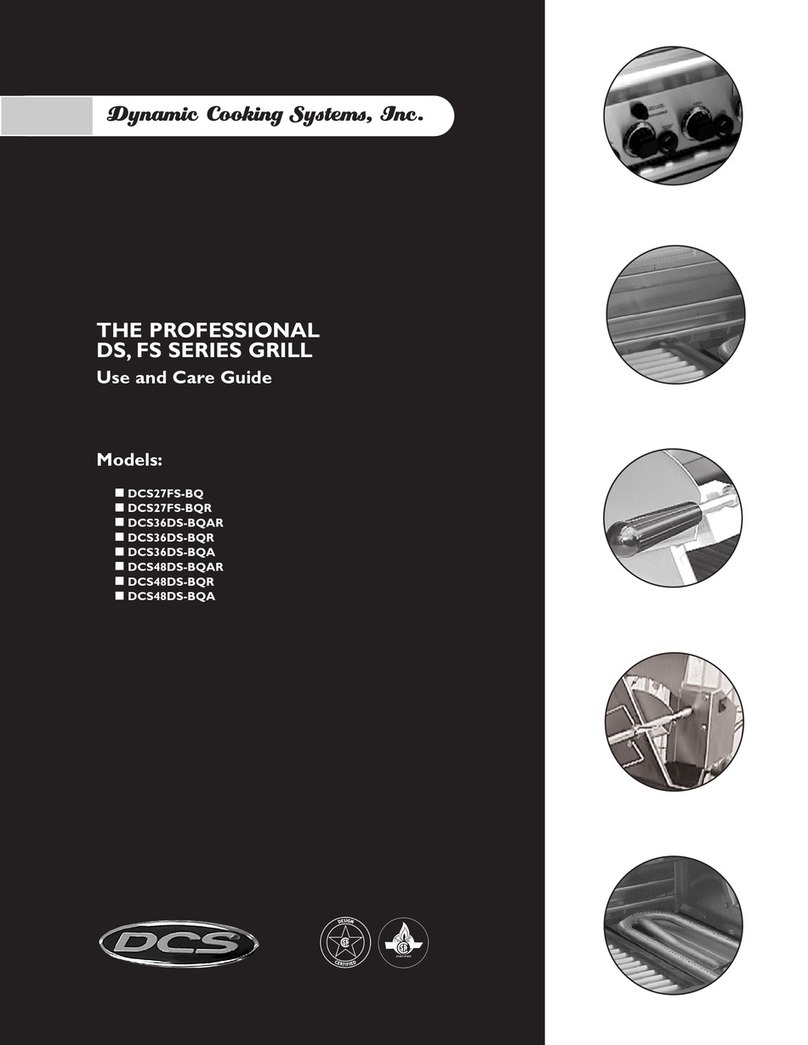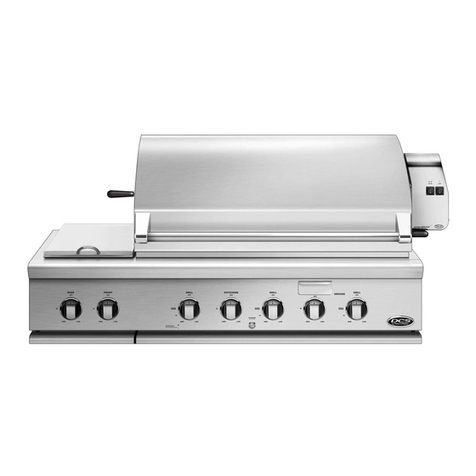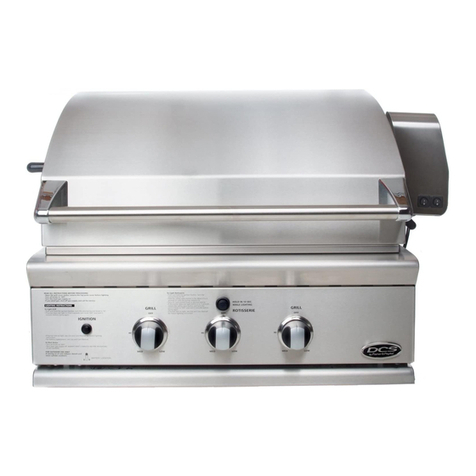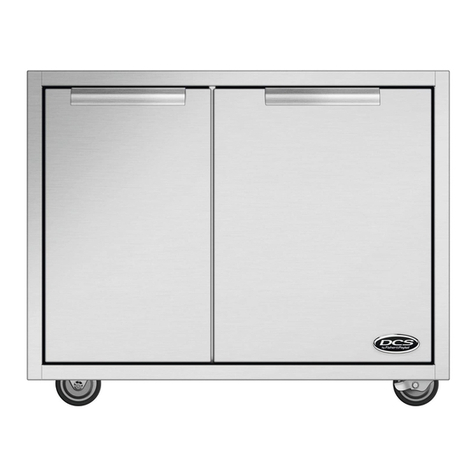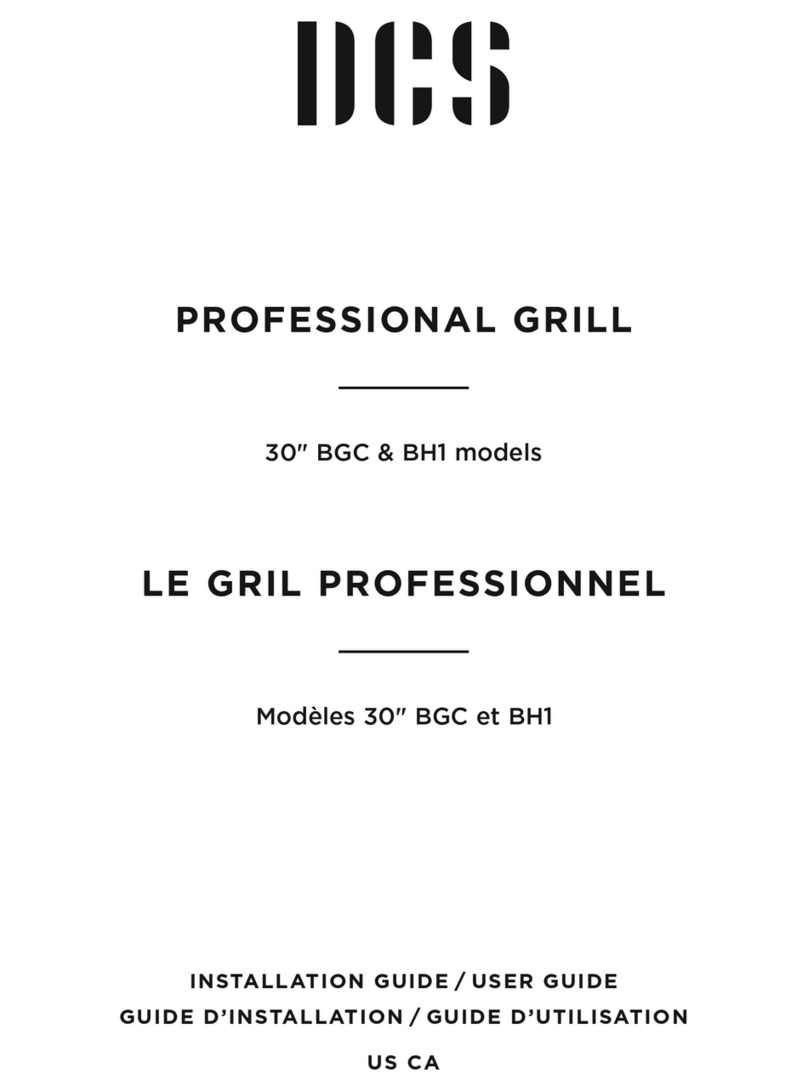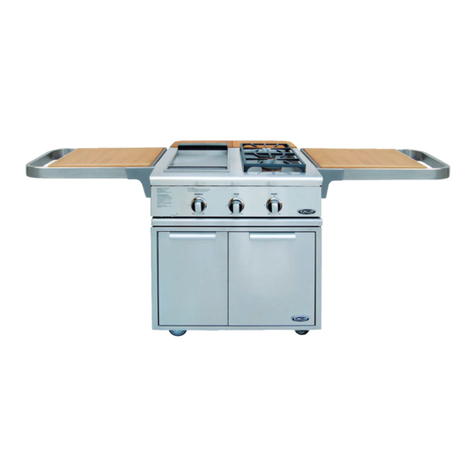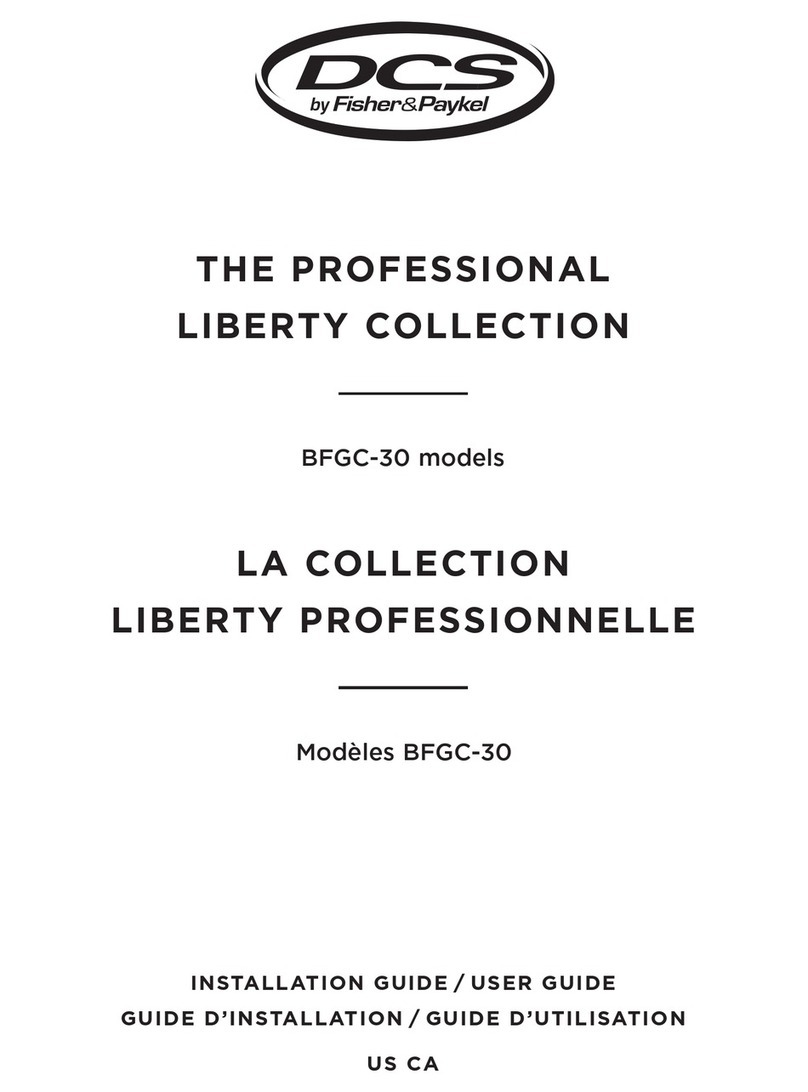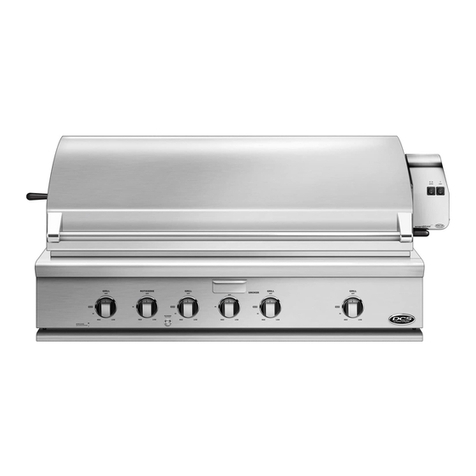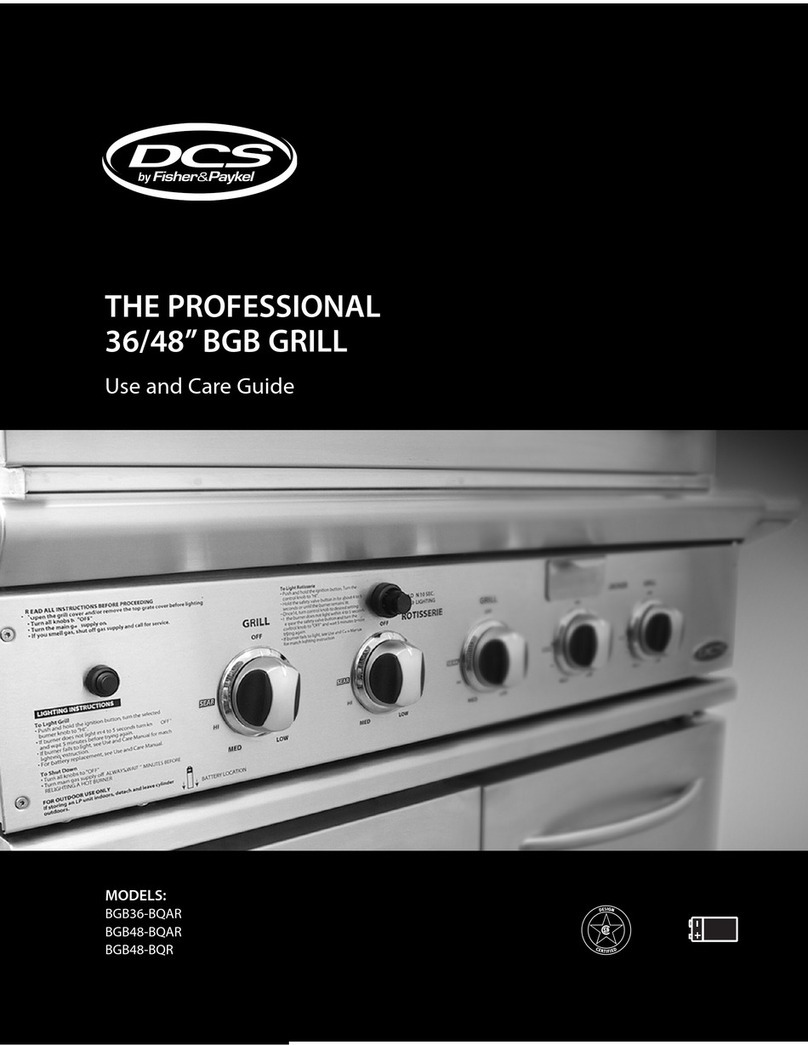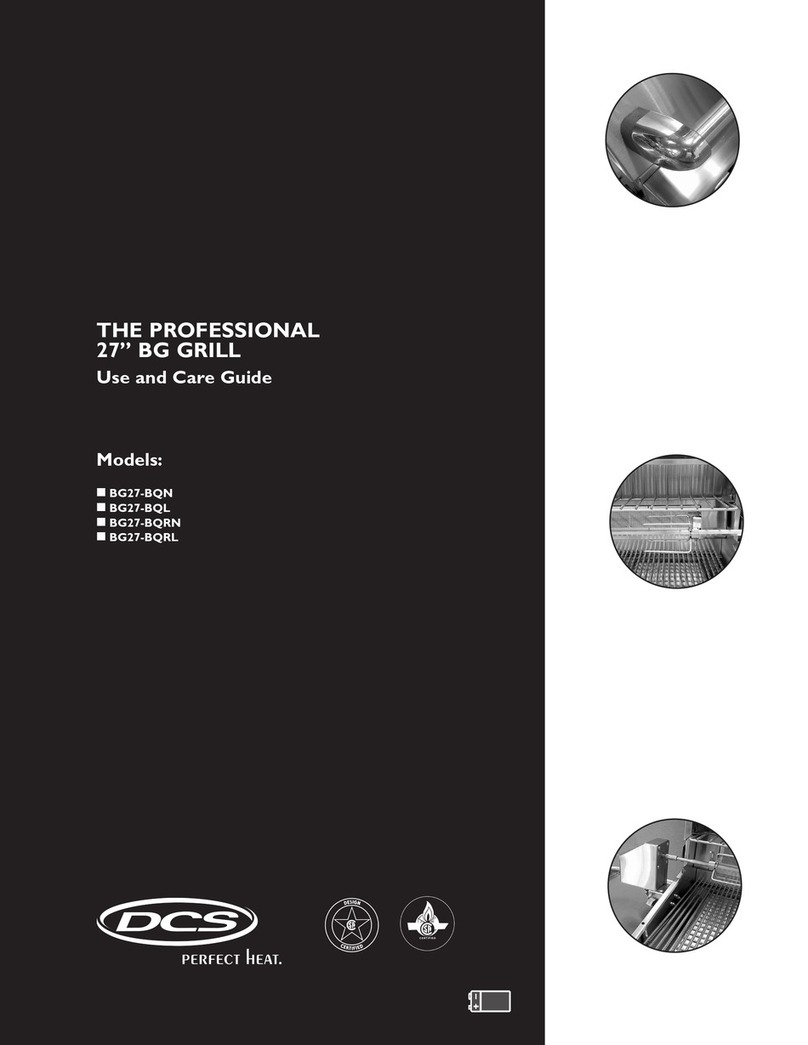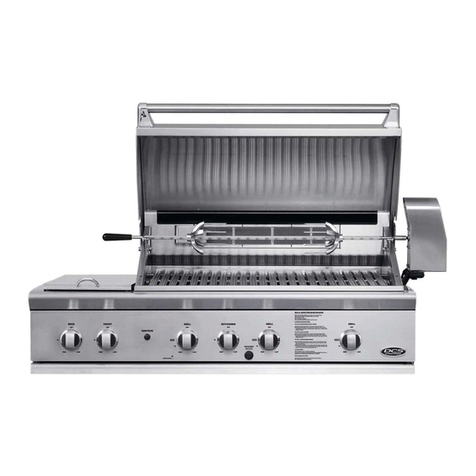
4
SAFETY AND WARNINGS
IMPORTANT SAFETY INSTRUCTIONS!
yDo not try lighting this appliance without reading the “LIGHTING INSTRUCTIONS” section of this
manual (page 27).
yThis grill must be installed according to these instructions and in compliance with the requirements
of the current version of AS/NZS 5601.1, local authority, gas, electricity, and any other statutory
regulations. Failure to install the product correctly could invalidate any warranty or liability claims.
yRefer to the current version of AS/NZS 5601.1 for pipe sizing details.
yBegin by ensuring proper installation and servicing. Follow the installation instructions within this
manual. Have your grill installed by a qualified installer. Have the installer show you where the gas
supply shut-off valve is located so that you know where and how to shut off the gas to the grill. If
you smell gas, your installer has not done a proper job of checking for leaks. If the connections are
not perfectly sealed, you can have a small leak and therefore a faint gas smell. Some leaks can only
be found with the burner control in the “ON” position and this must be done by a qualified gas fitter.
yChildren should not be left alone or unattended in an area where the grill is being used. Never allow
them to sit, stand or play on or around the grill at any time. When in use, portions of the grill get hot
enough to cause severe burns.
yDo not store items of interest to children around or below the grill, in the cart or masonry enclosure.
Never allow children to crawl inside a cart or enclosure.
yNever attach or disconnect an LPG cylinder, or move or alter gas fittings when the grill is in
operation or is hot.
yUse caution when closing the hood, especially if there are children around. Check that the path of
the hood is clear, as its weight could cause injury to hands or fingers caught under it.
yClean and perform general maintenance on the grill twice a year. Watch for corrosion, cracks, or
insect activity. Have a qualified gas fitter check the regulator, hoses, burner ports, air shutter, and
venturi/valve section carefully. Always turn off gas at the source (cylinder or supply line) prior to
inspecting parts.
yAfter a period of storage or non-use (such as over the winter), the gas grill should be checked for
gas leaks, deterioration, proper assembly, and burner obstructions before using.
yAlways use a covered hand when opening the grill hood and only do so slowly to allow heat and
steam to escape.
yAfter lighting burners, make sure burners are operating normally (see section “Burner adjustment”).
yThe sear burner is designed specifically for searing food. Do not use the griddle plate accessory or
charcoal insert or cover it with any other utensil type except the sear hot plate.
yDo not use aluminium foil to line drip pans or grill grates or radiants. This can severely upset
combustion air flow or trap excessive heat in the control area. The result of this can be melted knobs
or damaged ignition components.
yThe prongs of the rotisserie forks are very sharp. Take care when unpacking, assembling, or handling
the rotisserie to avoid injury.
yDo not operate with a damaged cord or plug or after the appliance malfunctions or has been
damaged in any manner. Contact the manufacturer for repair.
yDo not let the cord hang over the edge of a table or touch hot surfaces.
yDo not use an outdoor cooking appliance for purposes other than intended.
yThis appliance is not intended for use by persons (including children) with reduced physical, sensory
or mental capabilities, or lack of experience and knowledge, unless they have been given supervision
or instruction concerning use of the appliance by a person responsible for their safety.
yDo not modify this appliance.
yDo not use lighter fluid in the outdoor grill. Combustible fuels must not be used with the appliance.
yKeep any electrical supply cord, or the rotisserie motor cord away from the heated areas of the grill
and water (pools, fountains, puddles).
yNever use a dented or rusty LPG cylinder. Keep the ventilation openings of the cylinder enclosure
free and clear from debris.
yDo not move the appliance during its use.
yDo not locate the outdoor grill in an inclined plane. Be sure to lock the castor wheels before
operating the unit.
